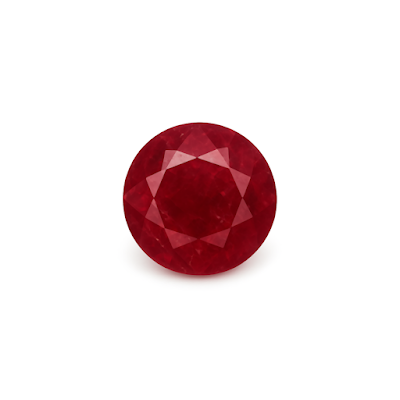Nestled in the misty highlands of Myanmar (formerly Burma), the Mogok Valley has captivated gem enthusiasts for centuries as the birthplace of the world’s most exquisite rubies. Known for their hypnotic crimson hues and unmatched brilliance, Mogok rubies are more than mere gemstones-they are treasures forged by nature, steeped in legend, and coveted by royalty. This article unravels the mystique of Mogok rubies, exploring their history, unique characteristics, ethical considerations, and tips for discerning buyers.
The Legendary History of Mogok Rubies
1. A Valley of Kings and Gemstones: Mogok’s ruby mines have been shrouded in myth since antiquity. Local lore claims the valley was discovered in the 6th century when a serpent’s egg split open, revealing glittering rubies. Burmese kings later deemed these gems “the tears of the earth,” reserving them exclusively for royalty. The British colonial era (1885-1948) intensified mining efforts, with Mogok rubies adorning European crowns and jewelry. Even today, the valley remains a symbol of Myanmar’s gemological heritage, though access is restricted, preserving its enigmatic aura.
2. Colonial Exploitation to Modern Challenges: Post-independence, Myanmar’s military regime tightened control over Mogok’s mines, leading to artisanal mining by locals and limited mechanization. Political turmoil and trade sanctions have made ethically sourced Mogok rubies rare, yet their allure persists in auctions and private collections.
Geological Marvel: How Mogok Rubies Form
Mogok’s rubies owe their brilliance to a perfect storm of geology. Formed over 30 million years ago, the valley’s marble-hosted deposits are rich in chromium-the element responsible for the gem’s signature “pigeon’s blood” red. Unlike rubies from basalt-rich regions (e.g., Thailand), Mogok’s marble matrix minimizes iron content, yielding stones with exceptional clarity and a mesmerizing fluorescent glow under UV light.
Characteristics of Mogok Ruby Gemstones
1. The Pinnacle of Color: Pigeon’s Blood Red: The term “pigeon’s blood” describes Mogok rubies’ vivid, saturated red with a hint of blue. This hue, reminiscent of a freshly spilled droplet from a pigeon’s heart, is unmatched in intensity. Stones from Mozambique or Madagascar often display orange undertones, making Mogok’s pure red a benchmark for quality.
2. Clarity and Inclusions: Nature’s Fingerprint: Mogok rubies often contain silk-like rutile inclusions, which scatter light to create a velvety texture. While flawless stones are rare, these inclusions authenticate origin and enhance value. Glassy crystals or “fingerprint” patterns are telltale signs of a genuine Mogok ruby.
3. Fluorescence: A Radiant Secret: Under sunlight or UV light, Mogok rubies emit a fiery red glow due to chromium and low iron. This phenomenon, absent in many treated or synthetic stones, adds to their ethereal beauty.
Mogok Ruby vs. Other Rubies: The Distinction
While rubies from Thailand, Mozambique, and Tanzania are commercially abundant, Mogok’s remain unparalleled. Key differences include:
- Color Depth: Mogok’s chromium-rich, iron-poor composition yields purer reds.
- Fluorescence: Unique glow under light.
- Rarity: Limited supply due to political and geographical constraints.
Ethical Sourcing: Navigating the Complexities
Myanmar’s political climate raises ethical concerns. Post-2021 sanctions have complicated trade, making transparency vital. Buyers should:
- Seek Kimberley Process-like certifications (though rubies aren’t covered).
- Opt for dealers adhering to Responsible Jewellery Council (RJC) standards.
- Request lab reports from GIA or AGL confirming origin and untreated status.
Identifying Authentic Mogok Rubies
1. Certification is Key: Always demand a gemological report. Labs use advanced spectroscopy to trace geographic origin.
2. Look for Natural Inclusions: Silk inclusions, hexagonal growth zones, and apatite crystals signal authenticity. Avoid stones with gas bubbles or curved striae (signs of synthetics).
3. Beware of Treatments: Heat treatment is common in lower-quality rubies. Mogok stones are prized for being untreated, but ask for proof.
Caring for Mogok Ruby Jewelry
- Clean with mild soap and lukewarm water.
- Avoid ultrasonic cleaners and harsh chemicals.
- Store separately to prevent scratches from harder gems like diamonds.
Investing in Mogok Rubies: A Buyer’s Guide
1. Prioritize Color and Origin: A vivid pigeon’s blood hue from Mogok commands premium prices. Compare stones under natural light.
2. Size and Cut Matter: Larger rubies (3+ carats) are exponentially rarer. Opt for cushion or oval cuts to enhance color.
3. Provenance and Documentation: Ensure traceable supply chains and conflict-free certifications. Auction houses like Sotheby’s or Christie’s often feature verified Mogok rubies.
The Market for Mogok Rubies
Mogok rubies consistently break records. The Sunrise Ruby, a 25.59-carat Mogok stone, sold for $30.3 million in 2015. Despite ethical challenges, demand persists among collectors and connoisseurs.
Conclusion: The Eternal Flame of Mogok
Mogok rubies are more than gemstones-they are fragments of history, artistry, and geological wonder. Beauty make them heirlooms of passion and prestige. Whether you seek an investment or a symbol of love, a Mogok ruby is a testament to nature’s ability to craft perfection.
By understanding their origins, characteristics, and ethical nuances, you can own a piece of this scarlet legacy with confidence. In a world of fleeting trends, the Mogok ruby remains eternally sublime.














0 Comments